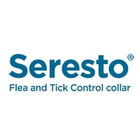
Introduction
When you’re enjoying a warm slice of bread, it’s tempting to share a piece with your furry friend. After all, bread seems harmless and is a common food in many households. But before you hand over that crust, it’s natural to wonder — is bread safe for dogs?
The answer is yes, dogs can eat bread in moderation, but there are some important considerations to keep in mind. Not all types of bread are safe, and specific ingredients can be harmful to your pet. This guide explains when it’s okay to give your dog bread, what kinds to avoid, and how much is too much.
Can Dogs Eat Bread?
Plain white or whole-wheat bread is generally safe for healthy dogs when given in small amounts. It’s not toxic, but it also doesn’t offer much nutritional value.
Bread mainly contains carbohydrates, and feeding too much of it can lead to unwanted weight gain in dogs.
In short:
✅ Occasionally okay – small bites of plain, unsweetened bread.
❌ Avoid regular feeding – bread adds calories but no real benefits.
If your dog has no allergies and maintains a healthy weight, occasional bread treats are fine. But it should never replace a balanced diet or your dog’s regular meals.
Health Benefits (and Limitations) of Bread
While bread isn’t a superfood for dogs, it can have a few minor benefits when used wisely:
- Gentle on the stomach: A small piece of plain bread can help soothe minor digestive discomfort, especially if your dog has eaten something irritating (though always consult your vet).
- Source of energy: Carbohydrates in bread provide quick energy, though dogs usually get sufficient energy from protein and fats in their regular diet.
- Fiber support: Whole-grain bread provides a modest amount of fiber that supports healthy digestion and helps regulate bowel movements.
However, these benefits are minimal. Commercial dog food already contains all the nutrients your dog needs, so bread should be treated only as an occasional snack.
When Bread Can Be Harmful
Not all bread is safe. Some varieties contain ingredients that are toxic or unhealthy for dogs. Here are a few examples:
- Raisin bread: Raisins are extremely dangerous for dogs and can lead to kidney failure, even if only a small amount is eaten.
- Garlic or onion bread: Both garlic and onions are poisonous to dogs and can damage red blood cells.
- Bread with nuts: Especially macadamia nuts, which are toxic to dogs.
- Bread with xylitol: Xylitol, an artificial sweetener often used in “sugar-free” baked goods, is deadly for dogs.
- High-fat or sugary bread: Donuts, pastries, and sweet rolls can cause obesity, pancreatitis, and blood sugar spikes.
Always check the ingredients list before sharing bread with your dog. When in doubt, avoid feeding it.
Can Bread Help Dogs with Upset Stomachs?
Some pet parents give plain white bread to dogs with an upset stomach, thinking it helps absorb toxins or calm nausea. While this may have been common advice in the past, it’s not a recommended treatment today.
If your dog vomits, has diarrhea, or seems unwell, feeding bread may delay the correct diagnosis. It’s best to consult your vet for proper treatment instead of trying home remedies.
How Much Bread Is Safe to Feed Your Dog?
Bread should make up no more than 5–10% of your dog’s total diet.
For example:
- Small dogs: A quarter slice of plain bread once a week is enough.
- Medium dogs: Half a slice occasionally.
- Large dogs: One slice as a rare treat.
Always break the bread into small pieces and offer it plain — no butter, jam, or toppings. Also, ensure your dog has no wheat or gluten allergy before feeding them bread.
Watch Out for Allergies and Sensitivities
Just like humans, some dogs may have gluten intolerance or wheat allergies. Signs of an allergic reaction include:
- Itchy skin or ears
- Hair loss or skin rashes
- Digestive problems (vomiting, bloating, diarrhea)
If you notice any of these symptoms after feeding bread, stop immediately and contact your vet. You can also try gluten-free dog treats explicitly designed for sensitive stomachs.
Avoid Raw Dough at All Costs
Raw yeast dough is dangerous for dogs. When eaten, the dough can continue to rise in the stomach, causing painful bloating, gas, and even stomach rupture. Fermentation also produces alcohol, which can lead to alcohol poisoning.
If your dog accidentally eats raw dough, seek veterinary assistance immediately.
Healthy Alternatives to Bread
If your goal is to give your pet a treat, there are healthier and safer options than bread. Try:
- Small pieces of apple or banana (without seeds or peels)
- Cooked sweet potato cubes
- Plain pumpkin puree
- Dog biscuits or dental chews made from natural ingredients
These options offer a balance of taste, texture, and nutritional value without unnecessary carbs or risks.
Key Takeaways
- Plain white or wheat bread is safe in small quantities.
- Avoid raisin, garlic, onion, or xylitol-containing breads — they are toxic.
- Bread is not a nutritious food, so limit it to an occasional treat.
- Watch for allergic reactions and never feed raw dough.
- Opt for healthier snacks that benefit your dog’s overall health.
Conclusion
Bread might be a comfort food for humans, but for dogs, it’s simply a filler treat — safe only in small doses and without harmful ingredients. If you choose to share, keep it simple, brief, and infrequent.
For your dog’s health and happiness, stick to a well-balanced diet recommended by your veterinarian. And remember — what’s delicious for you isn’t always best for your pet.






